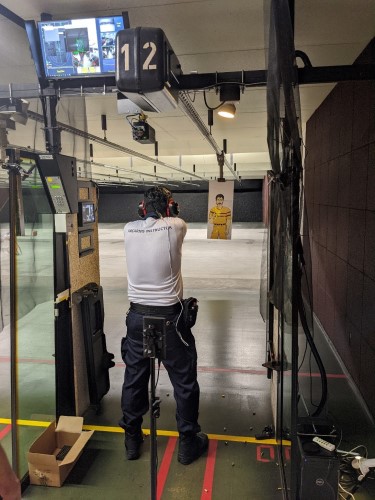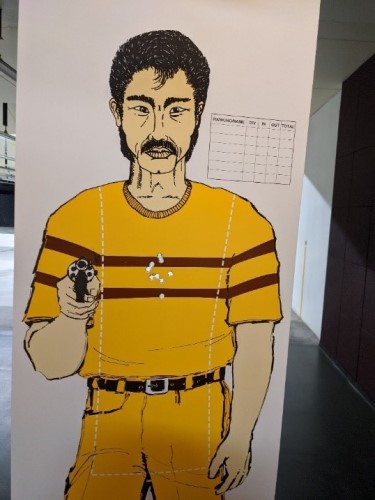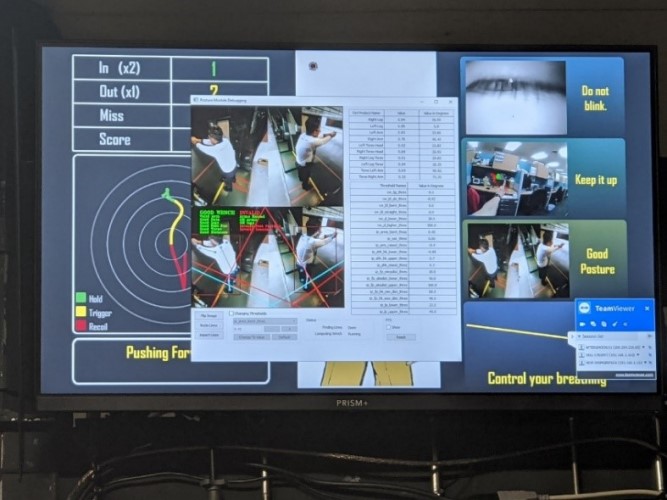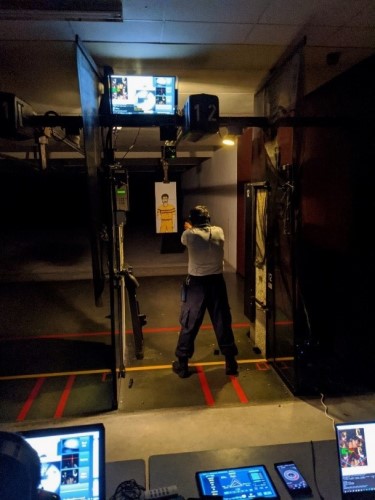 A police officer practising at the live firing range (Photo: HTX)
A police officer practising at the live firing range (Photo: HTX)
Every little breath, every twitch of your finger, or even blinking too often can cause you to fail, miss the mark and possibly result in a loss of life in the worst instance.
Shooting a gun or revolver accurately is a skill that demands precision. You might have tried shooting in a video arcade but that is very different from the real-life experience which Singapore police officers have to rigorously train for.
They even have to take a yearly revolver shooting test to ensure that they are up to the mark.
The officers are faring well, with over 90 percent passing the test every year. But the police force wanted to improve the scores – and ultimately boost public safety.
Previously, while warming up before the test, the police officers were only able to see where their shots had landed when the target boards were retrieved at the end of the warm-up shoot or the basic firing shoot. They had to rely on the instructor to give them feedback retroactively on areas they could improve on, based on the instructor’s experience and observation of the grouping of the shots. There was no real-time analysis after each shot was fired.
While most passed the test, the minority who failed could not go back to work on the frontline until they retook the test and passed it.
 A target board showing where the shots landed (Photo: HTX)
A target board showing where the shots landed (Photo: HTX)
Today, officers’ firearm competency can be improved using a better training system. The Enhanced Live Firing Range System (ELFRAS), developed by the HTX Human Factors and Simulation Centre of Expertise and the Singapore Police Force, uses sensors and analytics to improve the shooting accuracy of those taking the test.
The system not only provides information on the grouping of shots, but also does real-time analysis of human factor indices such as weapon handling, breathing, shooting posture and stance, trigger motion, gaze fixation and visual alignment, so that timely and targeted training feedback can be provided.
 The ELFRAS giving real-time guidance to help officers improve their shooting skills (Photo: HTX)
The ELFRAS giving real-time guidance to help officers improve their shooting skills (Photo: HTX)
It also has a video-monitor which displays the shots on the target in real time, so officers can see immediately how they have performed.
But beyond that, ELFRAS tactically deploys sensors to pick up minute physiological human factors, which could affect the shot accuracy of the person taking the test:
- A weapon sensor, attached to the revolver and pistol, measures if the officer is handling his weapon in the right way for maximum accuracy. It also diagnoses typical poor weapon handling issues related to the pulling of the trigger and gripping of the weapon, amongst others.
- A pair of glasses with eye-tracking sensor can compute if and how long the officer has fixed his gaze on the target through the front and rear sight of the weapon, and even measure if he has blinked his eyes during the shot.
- A breathing sensor tells the officer if his breathing technique and even inadvertent swaying may result in general body movements which could impact shot accuracy.
- A posture detection system comprising a pair of cameras at the shooting lane and backend pattern recognition algorithm reads and compares the officer’s posture against a range of ideal shooting postures.
 The ELFRAS giving real-time guidance to help officers improve their shooting skills (Photo: HTX)
The ELFRAS giving real-time guidance to help officers improve their shooting skills (Photo: HTX)
.jpg?sfvrsn=2a8ba978_3) Quick summary of last shots at the same target distance for quick review of factors affecting performance (Photo: HTX)
Quick summary of last shots at the same target distance for quick review of factors affecting performance (Photo: HTX)
ELFRAS also monitors the shooting performance of officers not just within a single shooting exercise but over multiple exercises as well. With all the data, training pedagogy can be customised to increase the number of marksmen.
Apart from the police force, ELFRAS could be used by frontline officers in other Home Team departments like the Central Narcotics Bureau, and the Immigration and Checkpoints Authority.

